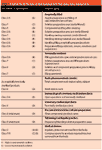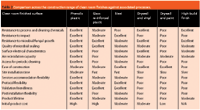Designing & Implementing Pharmaceutical Clean Rooms
Pharmaceutical Technology Europe
Possible cross-contamination issues should be eliminated at the early stage of the project. The project sponsor should ensure that all relevant personnel from the production, quality control, logistics, and maintenance departments, as well as engineering, are involved in the conceptual stages of a design.
Clean rooms are now used in a variety of industries, including microelectronics, nanotechnology, defence, pharmaceuticals and biotechnology. They range from small rooms and large suites to modular purpose-built structures feeding a comprehensive and complex maze of utilities and serviced equipment.
The principal function of a clean room is to protect the manufacturing product from contamination. In the pharmaceutical sector the commercial survival of the manufacturer depends on the integrity of the finished product. Therefore, it is important to identify a potential source of contamination, which could include the working environment itself.
However, it is important to remember that the quality control and standard operating procedure (SOP) requirements of a clean room are prerequisites for a successful clean room operation. A clean room can be defined as an environment where the supply, distribution and filtration of clean air and the material of construction are regulated to meet the appropriate cleanliness levels required and defined by the governing authorities to execute a validatible clean room.
Fundamental Design
Clean rooms within the pharmaceutical industry cannot be considered in isolation. The decision to use designated space within a production facility cannot be taken lightly. They are expensive to build and operate, which gives the design team the task of balancing a number of factors:
- What level of clean room environment is required?
- Is there enough space?
- Are the logistics surrounding the proposed facility affordable?
- Does it fit the budget?
The design team will have to consider these options at the conceptual stage because different types of clean room design require different disciplines to lead the design and layout process.
Primary pharmaceutical clean room environments. For these facilities the process engineering equipment and piping layouts determines the strategy because they are key elements of the manufacturing process (i.e, the process will be the lead discipline). The clean room is likely to be a small offloading, vessel charging or dispensing suite.
Secondary pharmaceutical clean room environments. Here, the architecture of the room layouts and the air environment are the 'manufacturing vessels' where products and people populate a given space. The architecture or mechanical services are the crucial factor in getting a correct synergy in people and product traffic flows
Biopharmaceutical clean room environments. For these facilities, the process vessels and equipment, the room layouts, and the flow of people are equally important to the process. Both processes and architecture are the lead disciplines to produce an integrated solution.
Possible cross-contamination issues should be eliminated at the early stage of the project. The project sponsor should ensure that all relevant personnel from the production, quality control, logistics, and maintenance departments, as well as engineering, are involved in the conceptual stages of a design. This avoids reworking design layouts later because the whole company has taken ownership. Therefore, the input from a wider 'team' reduces costly errors.
This team, which can include the design contractor, develop the initial user requirement specification (URS). This needs to be a short definition of the processes, equipment, operations, capacities and environmental criteria in the clean rooms to be designed.
Containment clean room facilities. The architectural room layouts and the heating ventilation and air conditioning (HVAC) environment are fundamental to a contained suite of laboratory clean rooms. Both architectural and HVAC disciplines take the lead to produce an integrated solution. When embarking on a project of this nature it is a prerequisite that the project sponsor has all the relevant departments in place so that the design team have a good understanding of the task ahead. This team will encompass all the ideas from the collaborative URS from which the design can begin.
Materials and People
In the URS the design team needs to review the flow of material and people around the clean rooms to assess the optimum layout for regulatory compliance (current good manufacturing practice [cGMP]), efficient operation and to minimize cross contamination.
It is easier to simplify these flows in new facilities, but difficult in retrofit situations where compromises may be needed to accommodate space or cost constraints. In this situation procedures and controls may need to be established to avoid cross contamination where waste, people, raw materials and finished goods share single corridors.
In summary the clean room design team must resolve all issues within the scheme design stage. Figure 1 summarizes the clean room design thought process from conception to completion.

Figure 1: The clean room design thought process.
Layouts
The key goal of layout design is to maximize the technical and lower classification areas around the main clean room suite by locating and specifying process equipment so they can be placed to allow maintenance from the non-clean room area.
There are two main benefits to this; first it minimizes the costly clean room partitioning system; and second it minimizes the maintenance procedures and costs.
This is not always easy to do and will be further hampered by the standard designs of equipment. Many pharmaceutical equipment suppliers are developing new equipment models and it is worth researching these at the start of a project as they may reduce capital and running costs.
Blow fill seal filling machine technology is an example of this. Up until a few years ago the whole machine had to be inside the clean room. Now suppliers offer machines that have 50% in a technical non-clean room environment and 50% in the clean room.
The layout should keep personnel and materials separate. If, because of layout constraints, these must be combined then SOPs will have to be put in place to control them. When planning higher classification clean rooms (Class 5 and Class 7), sufficient space must be allowed in the layout for incorporating multiple change steps (different clothing/change regimes that are required when entering a clean room classification that is higher or lower [step up/step down]). In the case of some Class 5 suites, and containment level 3 and 4 suites, separate exit and entrance routes are required to stop cross contamination of clothing. In smaller higher classification suites, changing rooms, airlocks and transfer hatches occupy a high proportion of the layout. Therefore, it is important to include these costs in any project approval budgets at the conceptual stage.
Suite Grades
As a general guide, Table 1 shows which clean room environment the main product groups require. This is only a guide, and a detailed assessment should be made (and defined) with production, quality assurance personnel and regulatory authorities before the clean room design starts, preferably at the front end design (FED) stage.

Table 1: A typical list of the main products groups and their clean room requirements.
Construction and Materials
Given the wide variety of products and systems on the market, the type of product/finish selected can be a reflection of personal preference and/or budget.
However, the overriding philosophy must be to provide a clean room fabric that will include the following criteria:
- A hard impervious smooth finish, with no sharp edges or angles, to prevent particle generation.
- Internal coved corners, angles and equipment plinths to make the surface easier to clean.
Table 2 compares the construction range of clean room finishes against associated processes.

Table 2: Comparison across the construction range of clean room finishes against associated processes.
Clean Room Construction
There are four basic types of clean room construction:
- plaster blockwork and paint (type 1)
- plasterboard/studwork and paint (type 2)
- solid core panel monoblock and factory applied finish (type 3)
- hollow core 'system factory panel system (type 4).
Generally types 3 and 4 offer more flexibility and are constructed quicker. Types 1 and 2 are more economic, but come with time penalties and less flexibility during construction. The type of wall construction must be defined early in a project (FED), as it affects the total project cost, timetable, and engineering and detailing costs.
The Cost Factor
Table 3 shows the comparative cost ranges for the three main clean room classifications used in pharmaceutical facilities. They exclude the shell construction, equipment installation and validation costs, which vary between projects.
It is advisable to conduct a concept study or front end engineering study to establish accurate costs because they vary considerably with facility specification, room size, layout and location.

Table 3: Typical comparative cost ranges for the three main clean room classifications used in pharmaceutical facilities.
A common mistake made by many companies is to assume that the m2 price from a previous project can be used for budgeting purposes for capital approval only to find that it is inadequate. This will then force the design team to design and specify within the budget available.
Procurement Options
Early in the research and design phase of project the procurement route to be taken must be reviewed by the design team. This will affect the level of detail design done by the project and by the chosen clean room installation contractor. This decision can ultimately affect whole project costs.
Table 4 reviews the procurement method for engaging either a clean room contractor to take on the design process or a dedicated consultant engineering team, with the advantages and disadvantages of both. The construction community is, however, currently developing subtle variations on these options.

Table 4: Procurement routes and their considerations.
Conclusion
The ultimate role of a clean room is to exclude the external environment; create a class of cleanliness required for the process by dilution or displacement of the contamination generated; house the equipment or process in an envelope that is fit for its intended purpose; and control and manage the flow of personnel and materials through the planning and running of the suite.
The top ten. The top ten issues to consider when designing a clean room are:
- Clarity about the GMP and standard used.
- Unidirectional airflow specification and qualification.
- Clean room pressurization.
- Air change rates and recovery time in non-unidirectional systems.
- Clean room configuration for the service and maintenance of process equipment.
- Validation of building control systems.
- Real time particle monitoring systems.
- Retest and requalification frequency.
- Biodecontamination by fumigation.
- High efficiency particulate air (HEPA) filter leak testing.
One final word of advice: no matter how simple or complex the project appears, success or failure depends on the amount of attention paid to the detail. It is often easier to focus on wider strategic or technical issues than the day-to-day planning, construction, operation and maintenance of a clean room. Yet it is the details that must be dealt with effectively in a planned and structured manner. Achieve this and you will meet your objectives — be they commercial, technical or marketing.
Ian M. Pearson is a project architect and pharmaceutical consultant at Lend Lease Projects, UK.
Pharmaceutical Tariffs Are Imminent: How Industry is Bracing for Impact
April 16th 2025On April 14, 2025, the Trump Administration launched a national security-driven investigation into pharmaceuticals, a move that will likely result in tariffs being placed on pharmaceutical drugs, ingredients, and other components that are imported from outside of the United States.
Drug Solutions Podcast: A Closer Look at mRNA in Oncology and Vaccines
April 30th 2024In this episode fo the Drug Solutions Podcast, etherna’s vice-president of Technology and Innovation, Stefaan De Koker, discusses the merits and challenges of using mRNA as the foundation for therapeutics in oncology as well as for vaccines.
